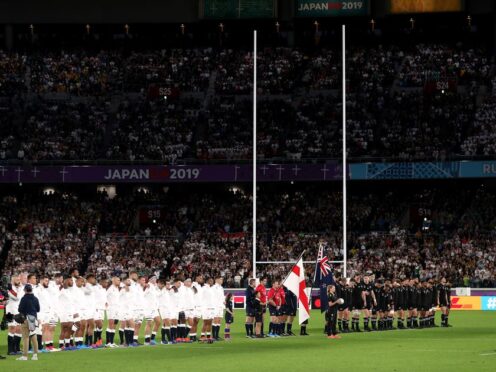
England play their first match in New Zealand for a decade as they look to shock the All Blacks in Dunedin on Saturday morning.
Here, the PA news agency examines five talking points heading into the first of two Tests between the rivals.
The ultimate challenge
Ready for the challenge 🌹
England head coach Steve Borthwick has named his 23-man squad to face the @AllBlacks in Dunedin on Saturday.#NZLvENG | #WearTheRose | @O2 pic.twitter.com/ShmhfyOppV
— England Rugby (@EnglandRugby) July 2, 2024
England wins against New Zealand on Kiwi soil are precious and have been managed only twice before – in 1973 and 2003. Since Martin Johnson’s team prevailed against the odds over two decades ago, England have played seven more times in the All Blacks’ back yard and got close only once, a 20-15 defeat in Auckland in 2014. South Africa are world champions, but outside the global showpiece winning a Test series in New Zealand is the sport’s ultimate challenge.
Chinks in armour
Your team for the first test of 2024 🇳🇿
Read more: https://t.co/3s9Ec1x9Ms pic.twitter.com/sexQz16wAU
— All Blacks (@AllBlacks) July 3, 2024
The All Blacks are heavy favourites to triumph at Forsyth Barr Stadium, yet they have rarely appeared so vulnerable. Their first outing of the year takes place under a new head coach and captain in Scott Robertson and Scott Barrett respectively, while influential stalwarts such as Richie Mo’unga, Brodie Retallick and Aaron Smith have either retired or are on sabbaticals in Japan. Factor in player unrest with administrators and the Crusaders fading as the dominant force in Super Rugby and it seems to be a good time to be facing the World Cup runners-up.
Smith’s moment of truth

If ever there was a moment for Marcus Smith to prove he is England’s principal fly-half it comes in Dunedin. Smith was electric in the tour opener in Tokyo a fortnight earlier, but the space provided by Japan’s defence was a gift to a player with his attacking repertoire. New Zealand will be far less accommodating, but if Smith’s decision-making and game management match his creativity with the ball in hand, the jersey will be his for the foreseeable future.
Savea v Earl
A thunderous collision awaits at number eight where Ben Earl and Ardie Savea go head to head. New Zealand’s Savea is the current world player of the year, a dynamic back row who is at his best in attack but also a force at the breakdown. Earl has displayed similar strengths since taking last autumn’s World Cup by storm and while they are not the biggest operators in their position, they have the explosive power to blast through tackles.
Long-term view

Win or lose, England’s line-up is unlikely to show many changes for the second Test in Auckland as part of a deliberate policy to develop a settled side. Steve Borthwick’s predecessor Eddie Jones was responsible for a high turnover of players but the current regime see retaining a core of internationals who develop through shared experiences as the best route to success at the 2027 World Cup.

Enjoy the convenience of having The Sunday Post delivered as a digital ePaper straight to your smartphone, tablet or computer.
Subscribe for only £5.49 a month and enjoy all the benefits of the printed paper as a digital replica.
Subscribe